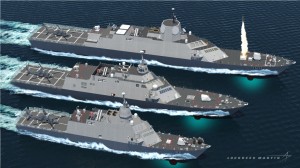In recent years, the government of Canada has been looking at renewing the federal fleets. Without a doubt, this is the largest and most ambitious shipbuilding initiative since the Second World War. The decisions that are made today and in the coming years will impact the abilities of the Royal Canadian Navy (RCN) and Canadian Coast Guard (CCG) for the next two generations. This is why the designs that are selected for fleet renewal are of paramount importance.
With nearly $35 billion on the table, it is no wonder that many are concerned with cost savings and efficiencies. However, the cheapest or existing “off-the-shelf” solution may, in fact, be a short-term gain that causes a long-term problem. What needs to be understood and kept to the forefront of our minds is that Canada needs ship designs that will deliver vessels capable of operating in all environments in which the government and Canadians expect the RCN and CCG to operate.
In recent years, the Joint Support Ship project has been on again, off again to the detriment of Canada’s naval capability, demonstrating how flawed Canada’s inflexible procurement policies are. To bring a quick resolution to the plagued program, some have advocated buying an off-the-shelf design. While this could potentially bring ships into the RCN quickly and at an initial lower cost, there are potentially significant drawbacks. Both Russia and Australia have recently purchased ships (Mistral and Bay Class) from other countries, and these decisions have proven to be more costly and delivered less operational capability than originally thought. For Russia, it turned out that the ships apparently do not operate in cold climates, and for Australia, significant refits were required after it was realized that the onboard cooling systems could not keep up with tropical climates. Another potential problem is that accepting an unmodified existing design often brings with it a supply chain that is difficult and expensive to support.
These are very important lessons learned that Canada must keep in mind when looking at choosing ship designs. Even within domestic waters, RCN and CCG ships are asked to operate is extremely varying climates. Whether it is the Gulf Islands on the West Coast, the shores off Newfoundland, or the High Arctic, RCN and CCG ships are asked to operate in all weather in greatly varied sea conditions. It is also important that Canadian industry be, to the greatest extent possible, capable of providing in-service support to these fleets.
Going a step further, Canada prides itself on being able to deploy ships anywhere in the world, undertaking tasks ranging from humanitarian aid to dealing with terrorism. Almost everywhere the RCN has operated in in the last decade, the climate has been the opposite extreme from that experienced in the North Atlantic or North Pacific. This demands a ship and systems be designed to operate in the widest range of temperatures, humidity and weather conditions.
In short, Canadian ships must be able to operate in temperatures ranging from ?52.2 °C in Resolute Bay, Nunavut, to over 50 °C (not counting humidity which can average over 90 percent) in the Persian Gulf. This is over a 100 °C difference. In Halifax alone, home of Canada’s East Coast Fleet, the temperature can vary from – 26.1 °C to 34 °C. Arguably, there are no other countries in the world that operate in such varying conditions on a daily basis.
Few if any off-the-shelf ship designs can cater to such needs. Acquiring ones that don’t meet the operational expectations of Canadians or cannot be supported by Canadian industry would, at a minimum, be embarrassing, but worse still could be the wrong decision from an operational perspective.
Canada must be wary of acquiring ships designed for a narrower range of climatic and sea keeping conditions not optimized for Canadian industrial support. Optimally, such design modification work should, at least in part, be done in Canada. Above all, the outcome must be a design that meets Canada’s range of operational and support requirements in a cost-effective manner.
In the coming months, the government of Canada is expected to announce ship design selections for new ships, with many more to come in the not too distant future. The important lessons that the government should keep in mind is that while it is sometimes tempting to buy off-the-shelf designs, short-term cost savings can have significant ramifications in the future, from costly refits to significant operational limitations. Sometimes it costs a little more for a ship designed to meet the range of capability that the Canadian government expects of its navy and coast guard, but the long-term benefits more than make up for it, not to mention the economic benefits of building and maintaining the ships here in Canada.
The reality is, choosing a ship design that is expected to last 30-40 years and meet a wide range of expectations is not quite as easy as going to the car dealership down the street and buying a car off the lot.
Andrew Warden manages maritime affairs and communications for the Navy League of Canada.

